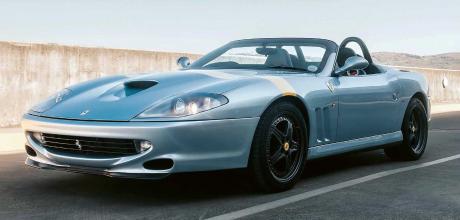2001 Ferrari 550 Barchetta
As an instant modern classic, the limited-production Ferrari 550 Barchetta was always going to be special. But how does drivingthis open-top V12 Ferrari feel more than two decades later?
SENTIMENTAL SYMPHONY
Although you’d assume most limited-edition cars from any brand to be special due to their rarity, heritage and individual backstory, somehow a limited-number Ferrari always feels that much more distinguished. Add to this aV12 powerplant, open-gate manual transmission, store-away roof and styling from one of the world’s most renowned design houses, Pininfarina, and the offer of an afternoon behind the wheel of this limited-edition automobile felt a little like Christmas to this particular petrolhead…
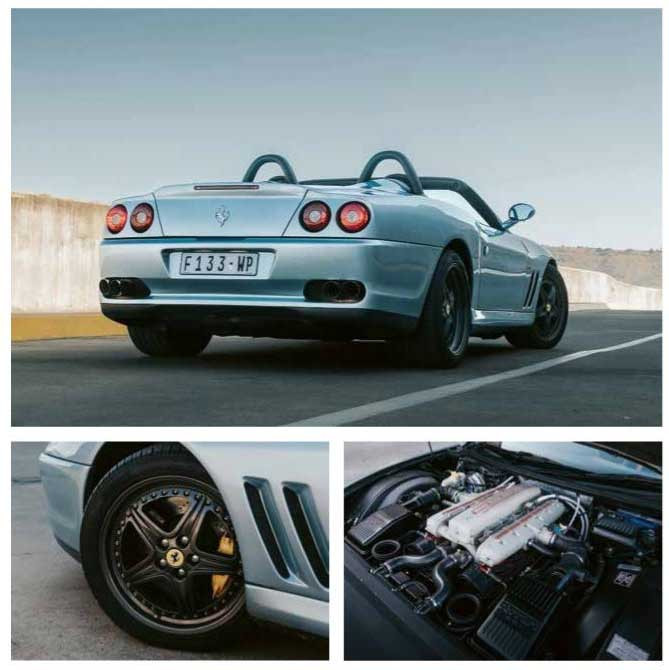
There’s no denying that the styling of the 550 Barchetta, which was produced between 2000 and 2001, is dated by contemporary standards. Still, it sports very strong design details shared with the hard-top 550 Maranello, and the fact that it is essentially a permanent roadster makes it quite attractive.
Of course, the car’s canvas roof can be put in place though, as this car’s owner admits, this somewhat onerous and time-consuming exercise both takes away from the distinct styling cues of this low-slung car – including those distinct fixed roll hoops – as well as from the thrill of owning a vehicle that wants for ideal driving conditions before it can leave the garage.
This Barchetta (or “little boat” in English) is no garage queen, though, as its owner has set out to enjoy his Ferrari as often as possible. The 48 000-plus km on the odo is noteworthy, especially as it was purchased from the UK in 2006 with only 8 800 km. Magic memories immediately followed. “In 2008 I drove from London to Monza and then on to Maranello. I then watched the Grand Prix in Monza. I’ve had some great memories and experiences with the car in the UK and being part of the Ferrari Owners’ Club GB. Apart from that, the car has been on Killarney International Raceway in Cape Town, Kyalami Grand Prix Circuit in Johannesburg and even Silverstone in the UK. I believe the miles on the car just add to its provenance – after all, no one checks the mileage on a 250 GTO! My next aim is 100 000 km.”
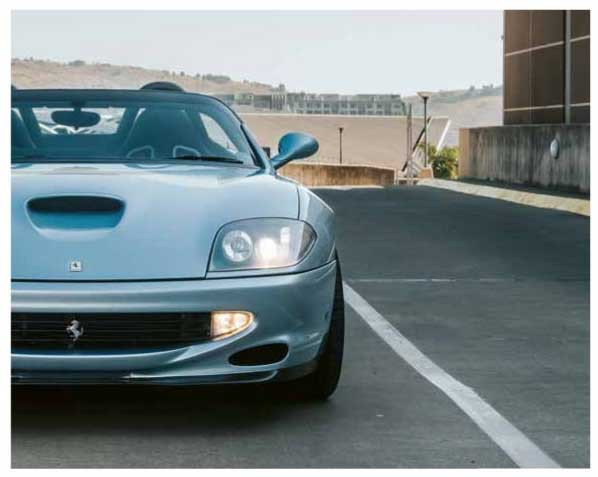
And that’s no lie: The fact that he did 35 laps around Zwartkops Raceway during a Ferrari event a few months ago attests to his intent to enjoy the car to the full. He’s also customised it a little by painting the rims a slightly darker colour, as well as adding a yellow stripe to the bonnet (as a tribute to the 250 GTO with chassis number #4153 GT, which sold for a record $70 million in 2018). And, finally, he commissioned ex-Simtek F1 driver Mimmo Schiattarella to build a special exhaust.
The Ferrari’s cabin exudes a level of simplicity no longer found in modern cars. With the gear lever to my left rising from an open gate, I find this analogue interface appealing, as it allows for an unfiltered connection with what is housed beneath this light blue car’s bonnet.
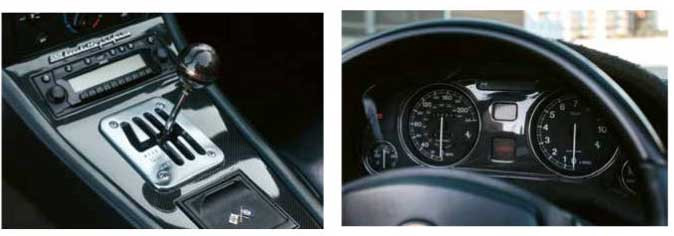
The four-point harness fitted to this car that, thankfully, secures the same way as a conventional over-the-shoulder setup, features in several other Maranello-made products built since this Barchetta. It makes one feel much more secure than a standard seat belt, while doing away with the time-consuming and cumbersome element of managing a traditional harness with its centre-locking mechanism. Needless to say, you know you are not driving an everyday Ferrari when it is equipped with one of these.
Pulling away, I immediately realise this is no lightweight track toy. Though it tips the scales at 1 690 kg, with 362 kW and 568 N.m underfoot, you’re afforded the level of smooth yet commanding acceleration through the gears.
Only once I start to push the needle past 7 000 r/min towards the red line can the engine’s true character be intimately experienced. Piloting the car around Zwartkops racing circuit, while through this track’s long, sweeping righthander, the Barchetto feels suitably planted, a smooth transition back onto the throttle out of the slower corners is required in order to maintain traction at the rear wheels. Any overexuberance will result in a nevertheless controlled slide. This liveliness is also aided by the fact that there aren’t particularly massive tyres fitted to the rear of this sleek prancing horse package, as well as the noteworthy amount of mass that’s being transferred around the centre of this Grand Tourer when pushing on. That said, consider how advanced stability and traction control systems have become in the two decades since this car was produced, and just how big of a role each of these technologies plays in the modern performance-car era, the Barchetta with its purity of both design and minimal driving aids proved less demanding to drive at its limits (or, the limits that I was prepared to reach in someone else’s prized possession) than I had anticipated. On track, you need to deactivate traction control (labelled ASR), as it really inhibits any efforts to put down the power.
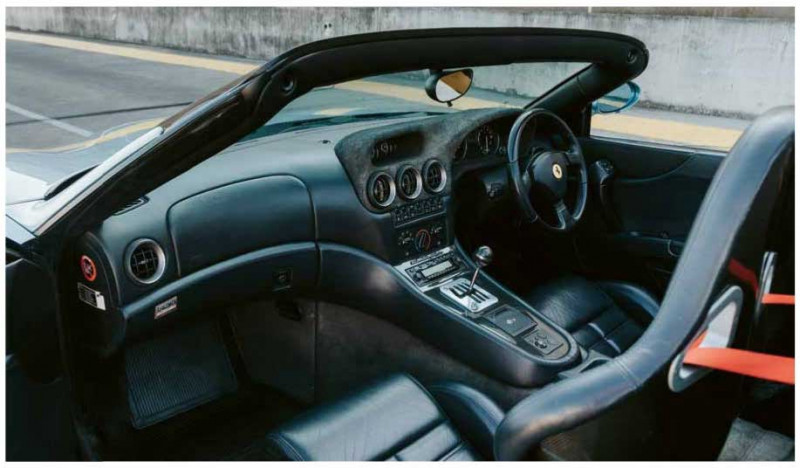
I don’t make use of all the braking force as I approach corners, though the brake pedal is relatively firm and nevertheless scrubs off the car’s speed with a good level of proficiency and balance. The steering provides decent feedback and the gears can be swapped faster than I expected. There’s a pleasantly audible “clack-clack” sound as the lever touches the metal edges of the gate. Blipping the throttle mid-shift makes the process even smoother. The track may not be its ideal environment, but this inherent level of playfulness only adds to the appeal of a car engineered to eat up long distances.
Seventeen years later and with numerous track day experiences with this car under his belt, this Ferrari’s owner is better placed than many to push the car to its actual limits – as he happily demonstrates to me… Later, on the highway, the revs sit comfortably below 3 000 r/min at an indicated 120 km/h though, given its mandate, I suspect it would cruise comfortably at double this speed. Only 448 samples of this model were produced, making this a semi-rare modern classic Ferrari. With its naturally aspiratedV12, manual gearbox and ragtop roof, on track or on the open road, the 550 oozes the kind of allure and presence that no contemporary, more sophisticated Ferrari GT is likely to replicate.
01 The number plate points to the engine code.
02 The current owner changed the colour of the wheels.
03 V12 engine is mounted far back in the chassis.
04 Barchetta windscreen is lower than on a standard 550 Maranello.
05 Cabin is pure sports car with leather, Alcantara and two sports seats.
06 Analogue dials a joy to use.
07 Open-gate six-speed gearbox.
08 On the go, there is a great combination of power and torque on offer.
TECHNICAL DATA 2001 Ferrari 550 Barchetta
- Engine: 5 474 cm³, V12, petrol
- Transmission: 6-speed manual, rear-wheel drive
- Max Power: 486bhp / 362 kW at 7 000 r/min
- Max Torque: 568 N.m at 5 000 r/min
- Maximum speed: 300 km/h
- Acceleration 0-62mph / 0–100 km/h: 4,4 seconds
- Fuel tank: 114 litres
- Weight: 1,690 kg
- Manufactured: 2000–2001


